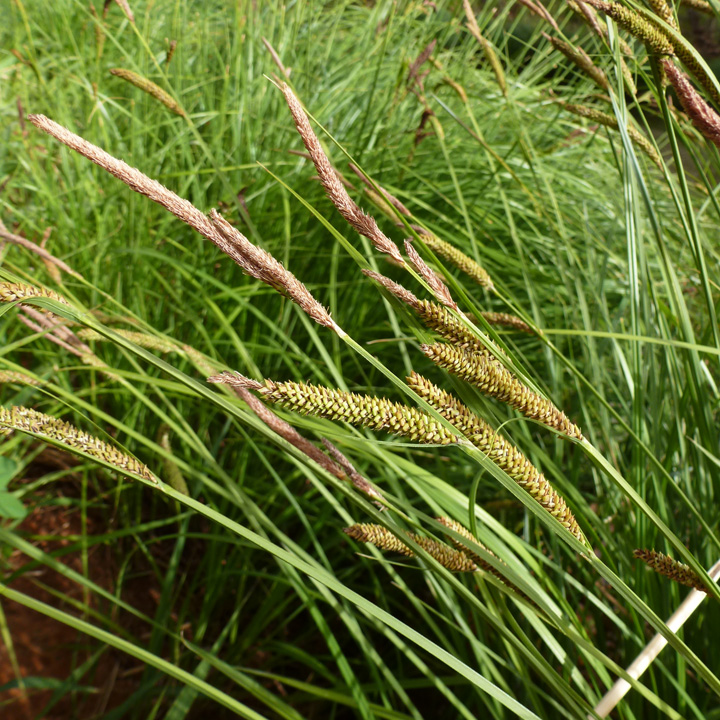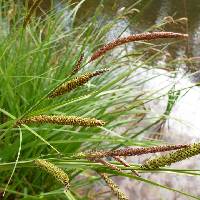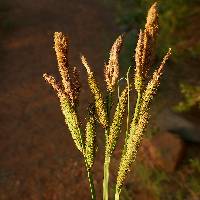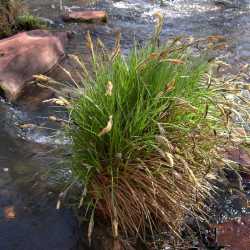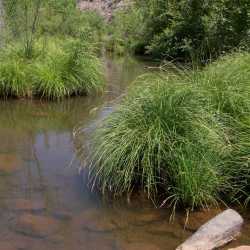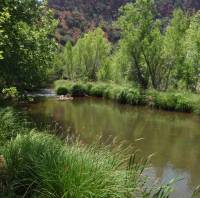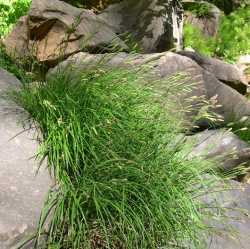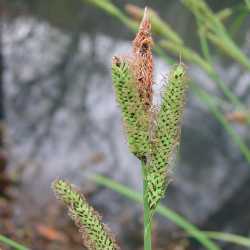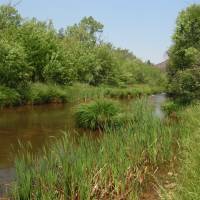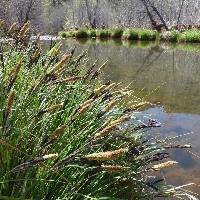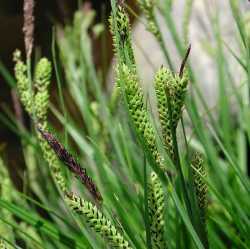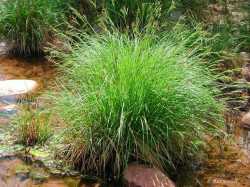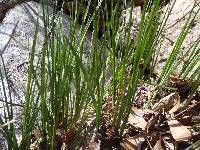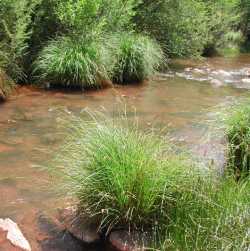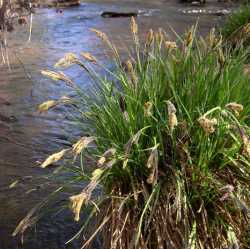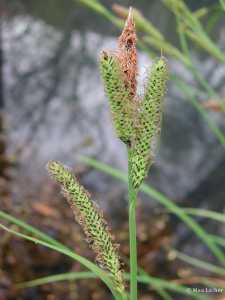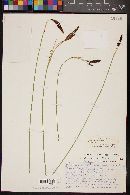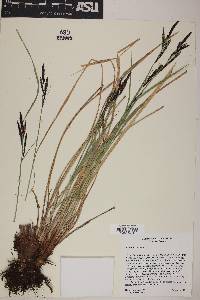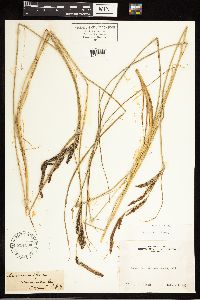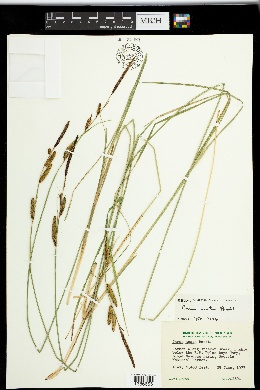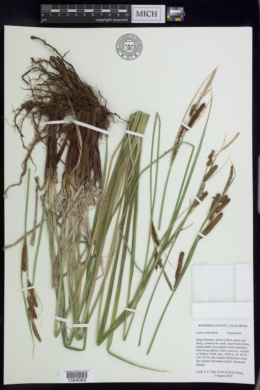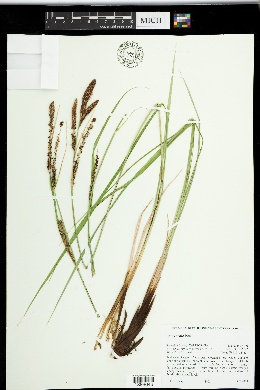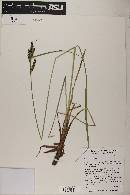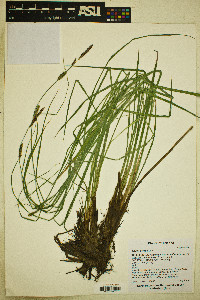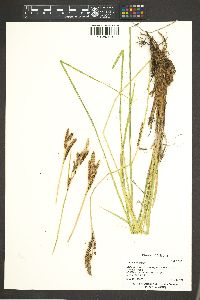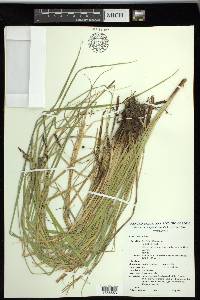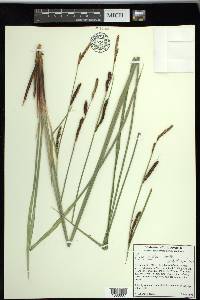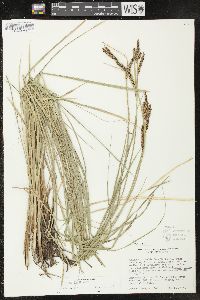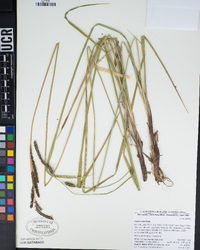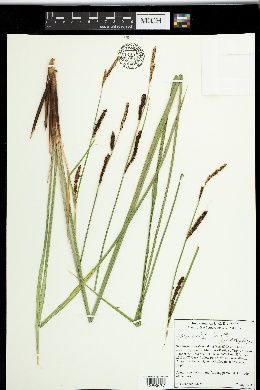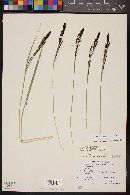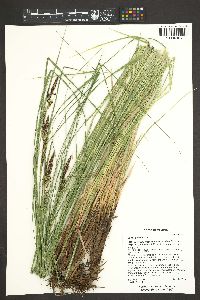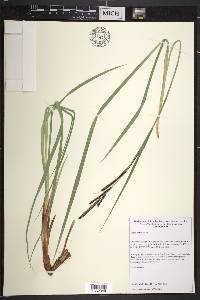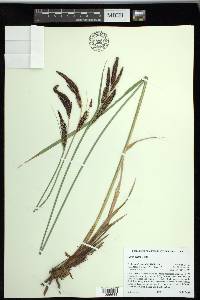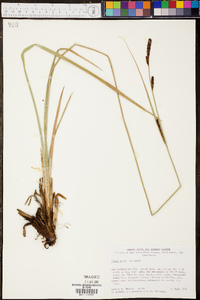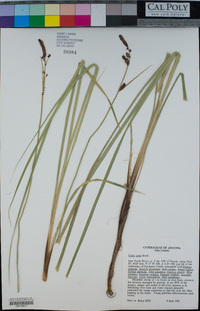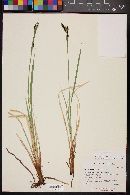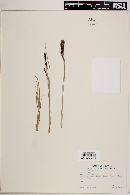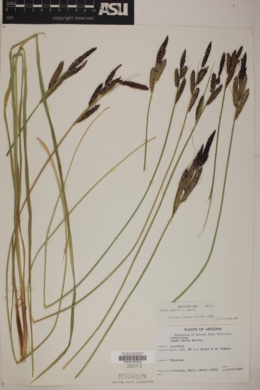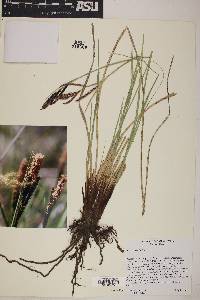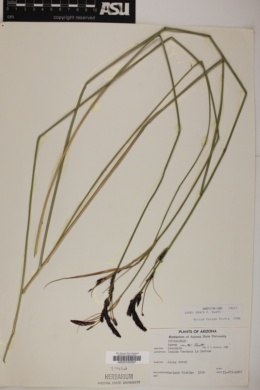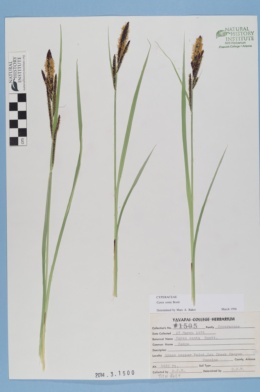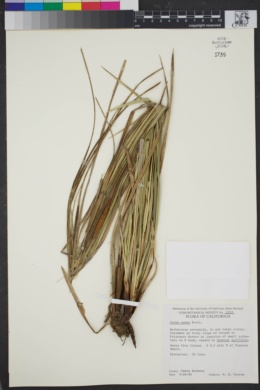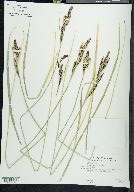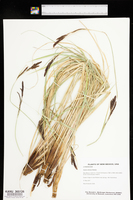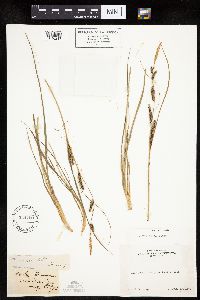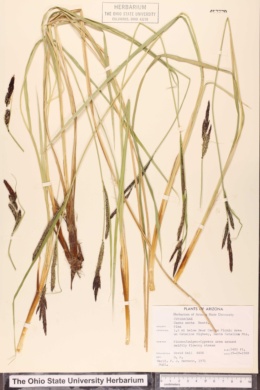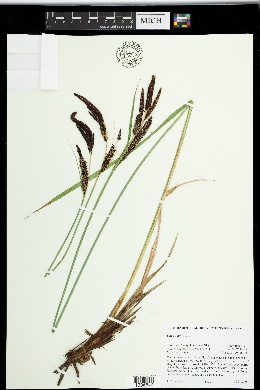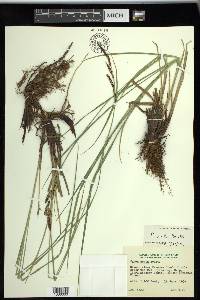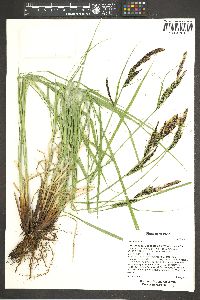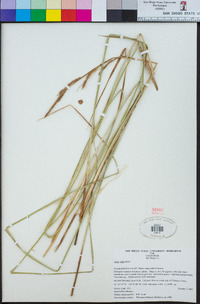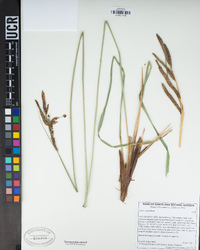Carex senta
|
|
|
|
Family: Cyperaceae
swamp carex, more...Western Rough Sedge, swamp sedge
|
Plants not cespitose. Culms acutely angled, 50-100 cm, scabrous. Leaves: basal sheaths red-brown; sheaths of proximal leaves scabrous, fronts with red-brown spots, prominently ladder-fibrillose, apex U-shaped; blades 4-8 mm wide. Inflorescences: proximal bract shorter than inflorescence, 3-5 mm wide. Spikes erect; staminate 2-3; pistillate 2-4; proximal pistillate spike 3-7 cm × 3-5 mm, base cuneate. Pistillate scales dark red-brown to black, shorter than perigynia, apex obtuse, awnless. Perigynia ascending, pale brown with red-brown spots on apical 1/2, 3-7-veined on each face, somewhat flattened, loosely enclosing achenes, thick-walled, ellipsoid or ovoid, 3-3.5 × 2-2.2 mm, somewhat leathery, dull, often scabrous on apical margins, apex obtuse, papillose; beak pale brown or red-brown, 0.2-0.3 mm. Achenes not constricted, dull. Fruiting Jun. Wet meadows along streams or rivers; 0-3000 m; Ariz., Calif.; Mexico. Carex senta is a member of the C. stricta group and is most similar to C. angustata. These two species, which may be sympatric, can be distinguished by C. senta, which lacks prominent bladeless sheaths, larger leathery perigynia with 3-7 veins on each face, and larger achenes. Carex senta is distinguished from C. nudata by the flowering from second-year stems, by the wider inflorescence bract, the broader ellipsoid perigynia, and the red-brown (rather than black) scales. Variation within the species, as well as its relationships with other members of the C. stricta subgroup, merit investigation. Specimens of C. senta from Santa Cruz Island have obovoid, apically rounded perigynia with a 0.1 mm beak, and specimens from Arizona have papery perigynia. Collections from New Mexico identified as C. senta are C. stricta.
FNA 2002, Martin and Hutchins 1980 Common Name: swamp carex Duration: Perennial Nativity: Native Lifeform: Graminoid General: Non-tufted perennial with acutely angled but slender stems 50-100 cm, scabrous on the angles. Vegetative: Leaves 4-8 per stem, mostly at base, basal sheaths red-brown with sheaths of basal leaves scabrous, their fronts with red-brown spots, u-shaped apex, the blades 4-8 mm wide. Inflorescence: Erect spikes with 3-5 per inflorescence, 2-3 staminate and 2-4 pistillate, lower pistillate spike 3-7 cm long by 3-5 mm wide, base cuneate, terminal spikes peduncled, lateral spikes sessile, lowest bract leaflike, usually exceeding the spike, not sheathing, pistillate scales dark red-brown to black, shorter than perigynia, apex obtuse, awnless; perigynia ascending longer than scales, pale brown 3-7 veined on each face, flattened, loosely enclosing achenes, ellipsoid or ovoid 3-3.5 mm by 2-2.2 mm, somewhat leathery, dull, scabrous on apical margins, obtuse apex, papillose, beak pale brown to red brown, 0.2-0.3 mm; achenes lenticular, not constricted, dull. Ecology: Found in marshy or wet soils along streams and rivers on on wet slopes from 4,000-10,000 ft (1219-3048 m); flowers June. Notes: This is one of the more common robust riparian sedges in Arizona, with terminal staminate spikes and lateral pistillate ones. It shares red/orangish brown bases with ladder-fibrillose sheaths with both Carex endlichii and C. pellita. However, in Carex endlichii, the terminal spike is most often gynecandrous (female above male flowers), and the mature perigynia are semi-inflated with an orangish tinge, while those of C. senta are flattened and green to tan with occasional red spots. Carex pellita is colonial-rhizomatous and has hairy perigynia, while C. senta is usually tussock-forming from shorter rhizomes, and has glabrous perigynia. (Notes: Max Licher and Glenn Rink 2012) Ethnobotany: Unknown Etymology: Carex is the classical Latin name for the genus, while senta means rough, thorny, a reference to the rough stems. Synonyms: None Editor: SBuckley, 2010 |
|
|
|

